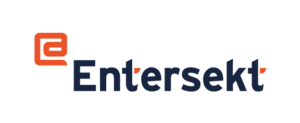Meet Entersekt

- What is the mission and vision of Entersekt?
Entersekt’s vision is of a world where everyone can interact and transact digitally without fear. In 2008, Entersekt launched the very first out-of-band, mobile push-based transaction authentication product in the world. Since then we’ve continued to innovate, and today millions of people across the world use our products daily to secure their online banking, mobile banking, online shopping, and corporate networks.
Entersekt’s mission is to be the preferred fintech partner for bringing financial service providers and their users closer together. We enable our customers with secure, privacy-enhanced, user-centric solutions that allows them to maintain a high degree of trust with their customers. With that foundation of trust, consumer adoption of lower-cost digital channels increases, while increasing the ability for the organization to offer more high-value services across those channels.
2. Why is trustworthy digital identity critical for existing and emerging markets?
In today’s world, customer engagement and intimacy, built on trust, have become key differentiators for organizations. Unfortunately, in existing markets, the amount of personal data that has been compromised due to breaches makes it difficult for any organization to know that they are dealing with a real person, and that the person on the other side of an interaction is actually who they claim to be. In emerging markets, identity is critical for social and economic advancement. Often however, an authoritative registry of individuals does not exist, which can complicate the identity proofing and corroboration process.
These factors highlight the need for a robust and scalable digital identity framework, since it’s more important than ever for organizations to be able to validate and engage with end-users securely. If this can be done efficiently, a world of potential can be unlocked where, for example, consumers can be allowed to engage in self-service activities, which can lower costs, enable new products and ultimately create better value propositions for both consumers and organizations.
3. How will digital identity transform the Canadian and global economy? How does Entersekt address challenges associated with this transformation?
Digital identity and interoperability are key to transforming and enabling any digital economy. With a trusted and secure digital identity, organizations will finally be able to move from legacy and physical processes over to digital, thereby reducing costs and improving the level of service . In addition, interoperable solutions can potentially allow for new lines of business and innovative products and services to be made available to the global market.
Entersekt provides organizations with the ability to accurately identify and authenticate users across the omni-channel via a convenient, secure, and privacy-enhanced user experience. Strong authentication is not only about telling the good guys from the bad. It helps to foster and maintain trust between organizations and their customers, allowing businesses to accelerate consumer adoption of their lower-cost digital channels while building on the foundation of trust.
4. What role does Canada have to play as a leader in the space?
The benefits of a successful digital identity ecosystem are well-documented: cost savings, fraud reduction, improved regulatory compliance, and enhanced privacy are only some of the advantages identified. As a highly-developed country of technology-savvy citizens comfortable with a range of digital interactions, Canada is already establishing itself as a global thought leader in digital identity. The added support that Canada’s public and private sector bring to the table as demonstrated through organizations such as DIACC, the willingness of stakeholders to be part of the process, as evidenced through numerous POCs in market, and the openness to transparency and collaboration are all crucial factors contributing to making Canada a leader in this space. The Canadian economy at large will ultimately benefit from the final outcome of these activities, while the global economy will benefit from the lessons it can learn from Canada’s leadership in this space.
5. Why did Entersekt join the DIACC?
At Entersekt, we believe that developing a national trust framework and digital identity ecosystem is the future, and we recognize the value of a digital identity ecosystem that prioritizes security, scalability, and transparency. As a company where the utmost security has always been the foundation of everything we do, the principles of a digital identity ecosystem for Canada, as set out by the DIACC, truly resonates with us. Joining the DIACC helps us play a part in this ecosystem, and provides a platform for us to share our global experience, and learn with fellow stakeholders as we work towards solving global issues across the digital domain.
6. What else should we know about Entersekt?
Entersekt’s mobile app security and authentication technology is used in more than 45 countries across the world to protect tens of millions of consumers as they transact over the Internet, via mobile devices, or by using other self-service channels. We provide organizations 100% certainty regarding the devices they are interacting with, and based on that certainty we can deliver outstanding user experiences. Entersekt is GDPR, PSD2, PCI DSS and MiFiD compliant.
